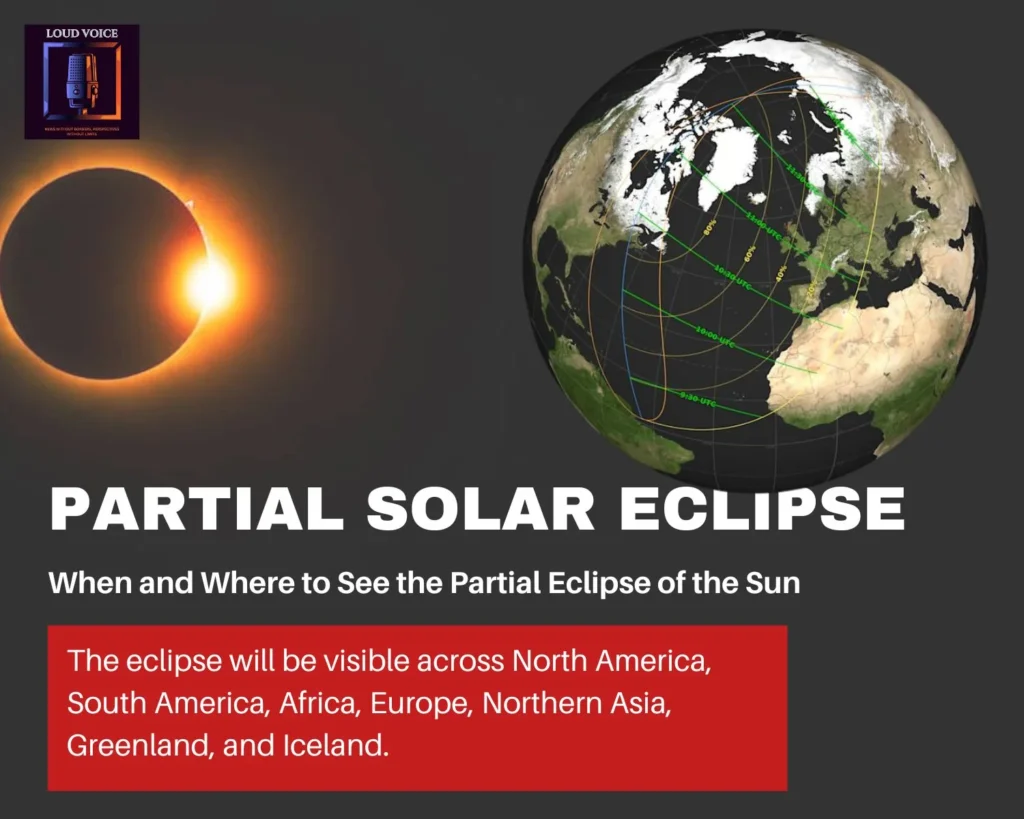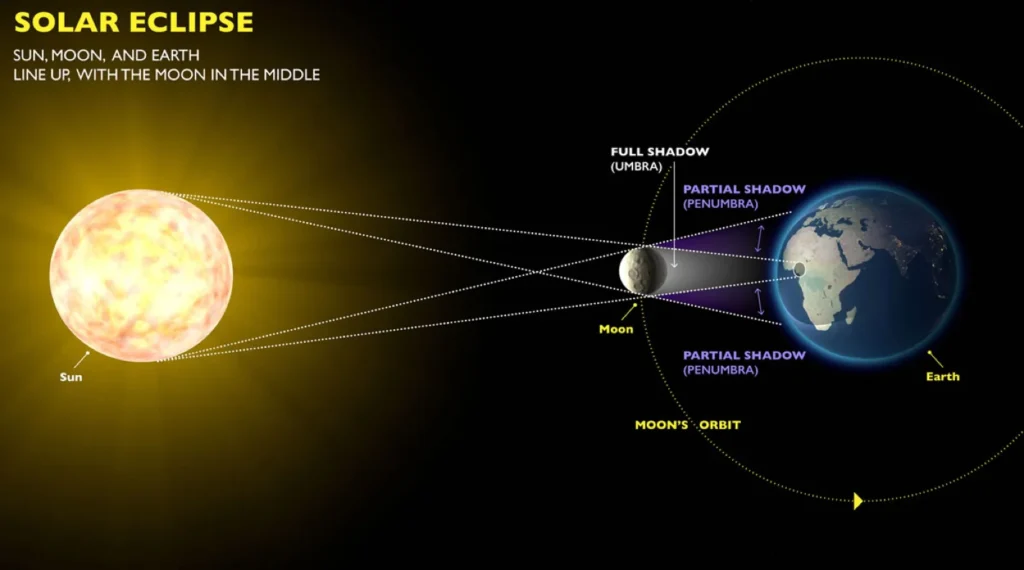What Is a Partial Solar Eclipse?
A partial solar eclipse takes place when the moon moves between the Earth and the sun without achieving perfect alignment. As a result, only a portion of the sun’s surface is obscured, forming a striking crescent shape in the sky. Unlike a total solar eclipse, where the sun is completely blocked for a brief period, a partial eclipse allows some sunlight to filter through, creating a fascinating interplay of light and shadow.
According to NASA, this celestial event offers a mesmerizing yet partial obstruction of the sun’s light. The degree of obscuration depends on the observer’s location, with some areas experiencing a more pronounced eclipse than others. While a total eclipse is often more sought-after, partial solar eclipses provide an equally captivating view of astronomical dynamics in action.
When and Where to See the Partial Eclipse of the Sun
Observers in various parts of the world will be able to witness this extraordinary event. The eclipse will be visible across North America, South America, Africa, Europe, Northern Asia, Greenland, and Iceland. However, only a small fraction—approximately 44,800 people—will experience a 90% obscuration of the sun, offering a nearly total eclipse experience.

Key Timings of the Partial Eclipse (ET/GMT):
- Start: 4:50 a.m. ET (8:50 GMT) over the northern coast of South America
- Peak: 6:47 a.m. ET (10:47 GMT)
- End: 8:43 a.m. ET (12:43 GMT) over Northern Siberia
While most of the continental United States will miss out, northeastern states like Maine, Massachusetts, and New York, along with Canadian cities such as Montreal, Ottawa, and Halifax, will witness a partial eclipse at sunrise. In Western Europe and Northwestern Africa, the event will occur later in the morning, while Eastern Europe and Northern Asia will experience it in the afternoon or early evening.
For detailed visibility maps, visit Time and Date’s website to check the duration and extent of the eclipse in your location.
Understanding the Phases of a Partial Solar Eclipse
A partial solar eclipse occurs in multiple phases, each offering a different viewing experience:
- First Contact: The moon begins to edge in front of the sun, gradually obscuring its surface.
- Maximum Eclipse: The peak of the eclipse occurs when the maximum portion of the sun is covered, forming a distinct crescent shape.
- Final Contact: The moon moves away, gradually revealing the sun’s full surface again.
These phases can last for several hours, providing ample time to observe the eclipse’s progression safely.
How to Safely View a Partial Solar Eclipse
While a solar eclipse is a breathtaking phenomenon, it poses serious risks to eye health. Direct exposure to the sun’s rays can lead to solar retinopathy, a permanent condition caused by retinal damage from solar radiation.
Essential Safety Measures:

- Wear Certified Eclipse Glasses: Ordinary sunglasses don’t work. Use only eclipse glasses that adhere to the international safety standard ISO 12312-2.
- Use Solar Filters for Optical Devices: Telescopes, binoculars, and cameras should be fitted with special solar filters to prevent eye damage.
- Avoid Unfiltered Optical Viewing: Even with eclipse glasses, do not look at the sun through a camera lens, telescope, or binoculars without a designated solar filter.
- Supervise Children: Ensure young observers keep their eclipse glasses on at all times while looking at the sun.
- Check for Damage: If eclipse glasses are scratched or torn, they should not be used.
Additionally, if you do not have access to eclipse glasses, you can use indirect viewing methods such as a pinhole projector. This simple device allows you to project an image of the eclipse onto a flat surface, offering a safe way to observe the event without direct exposure.
For a verified list of safe eclipse glasses and solar filters, refer to the American Astronomical Society‘s curated recommendations.
Why Do Solar Eclipses Occur?

Solar eclipses are a result of the precise alignment of the sun, moon, and Earth. When the moon’s orbit places it directly between the sun and Earth, it casts a shadow on our planet. This shadow consists of two parts:
- Umbra: The darkest part, where a total solar eclipse is observed.
- Penumbra: The lighter outer shadow, where a partial solar eclipse is seen.
Since the moon’s orbit is slightly tilted relative to Earth’s, solar eclipses do not occur every month. Instead, they happen a few times per year, depending on the moon’s positioning.
Upcoming Eclipses to Watch
Eclipses often occur in pairs, with a lunar eclipse usually preceding or following a solar eclipse. This pattern will repeat in September, bringing two more astronomical events:
- Total Lunar Eclipse: September 7–8, visible in Europe, Asia, Australia, Africa, South America, Alaska, and Antarctica.
- Partial Solar Eclipse: September 21, observable in Australia, Antarctica, and select Pacific islands.
These upcoming eclipses will provide sky-gazers with another opportunity to witness celestial mechanics at work. Those in optimal viewing locations should prepare in advance with the right gear to ensure a safe and memorable experience.
Check Time and Date’s website for exact visibility regions and timings for these upcoming eclipses.
Final Thoughts
A partial solar eclipse is a stunning cosmic event that offers sky-gazers an incredible spectacle. Whether you’re in North America, Europe, or Asia, prepare for this celestial wonder with proper eye protection and precise timing information. The interplay of the moon and sun serves as a reminder of the vast, dynamic nature of our universe. Mark your calendars and enjoy the magic of the crescent sun!
By taking the necessary precautions and understanding the science behind solar eclipses, you can fully appreciate the beauty and significance of these extraordinary celestial events.


